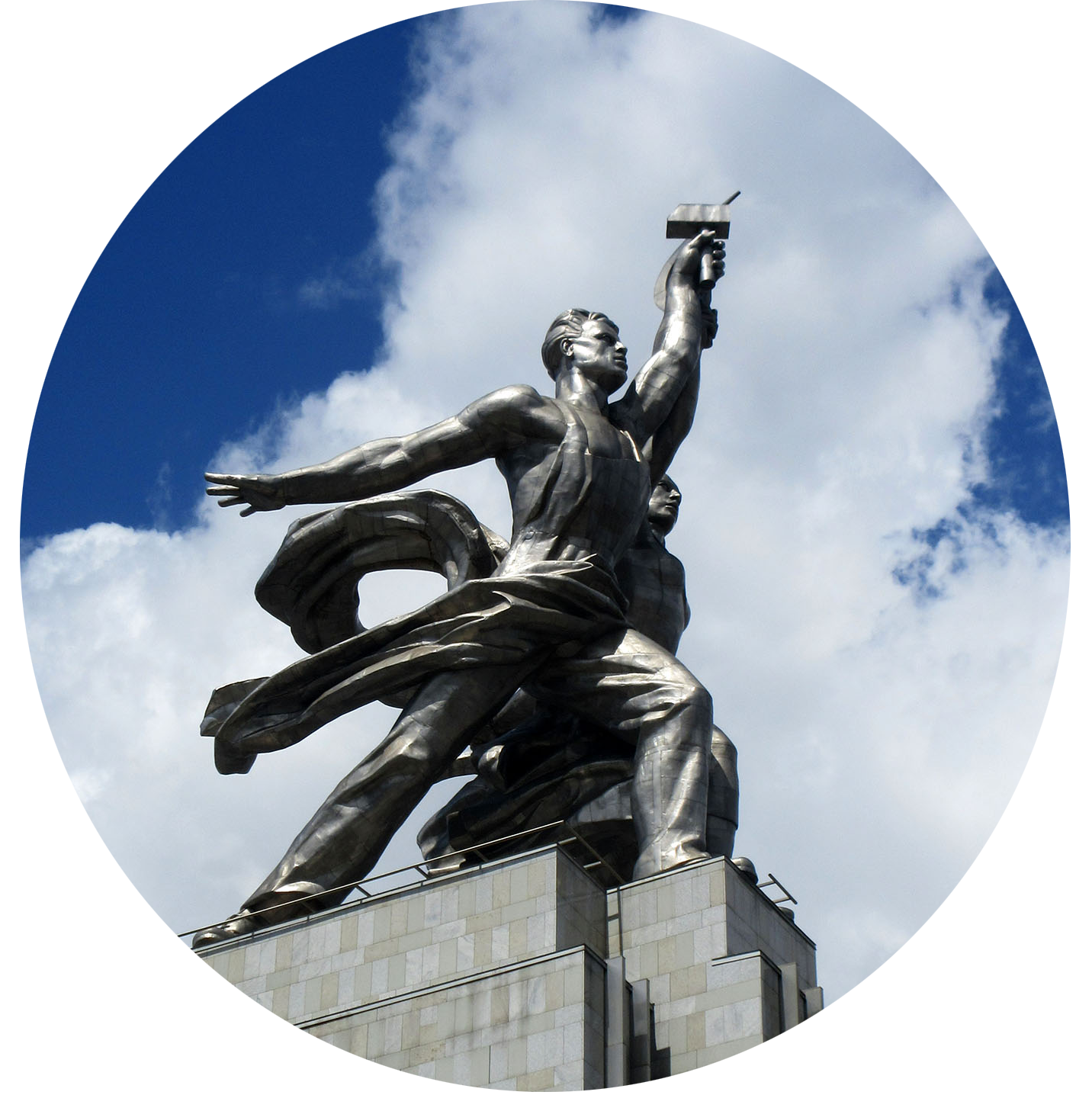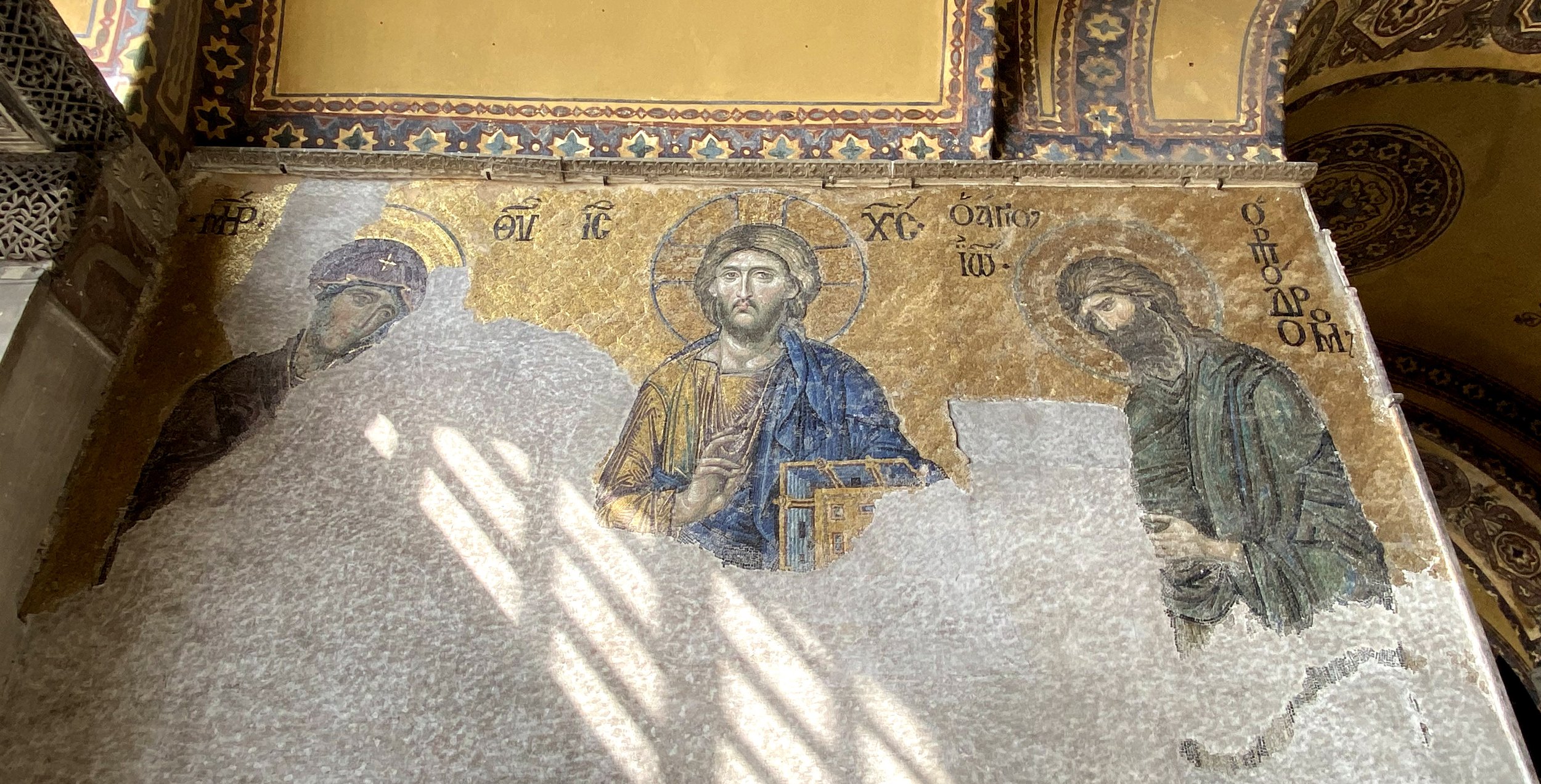Mandelshtam: Hagia Sophia
This is a poem by Mandelshtam describing the Hagia Sophia (literally, Holy Wisdom — i.e. the wisdom of God) in Istanbul, formerly Constantinople. A couple of notes may be helpful. First, the reference to the columns taken from the Temple of Diana (i.e. Artemis) in Ephesus (a Wonder of the Ancient World, supposedly burned down by Herostratus simply out of a desire to become famous) is purely legendary; no columns were actually taken from there to build the Hagia Sophia. The line about “bathing in the world” suggests — to me at least — the fact that the church sits on a hill surrounded on three sides by water — the Golden Horn, the Bosphorus, and the Sea of Marmara. I was particularly struck by this line on a cruise a took away from the city towards some islands to the southeast… at which point the Hagia Sophia could be seen clearly between sea and sky, now together with the nearby Blue Mosque (Sultan Ahmet Mosque) built in imitation of it. The verb купаться is somewhat hard to translate, in the sense that it while it can mean to “bathe,” it essentially means simply being in water, and is typically used for “swimming” or “taking a dip” in rivers, lakes, etc. Finally, the “pendentives” are the sloping transition points between the round dome and its square-shaped base, on which four archangels (seriphs, with six wings — reminding one of the Pushkin poem “The Prophet”) are depicted. Note also that the green carpet put in place for the mosque covers over most of the ornate stone floor, although a section of it can be seen above, to the right.
Айя-София
Айя-София — здесь остановиться
Судил Господь народам и царям!
Ведь купол твой, по слову очевидца,
Как на цепи, подвешен к небесам.
И всем векам — пример Юстиниана,
Когда похитить для чужих богов
Позволила эфесская Диана
Сто семь зеленых мраморных столбов.
Но что же думал твой строитель щедрый,
Когда, душой и помыслом высок,
Расположил апсиды и экседры,
Им указав на запад и восток?
Прекрасен храм, купающийся в мире,
И сорок окон — света торжество;
На парусах, под куполом, четыре
Архангела прекраснее всего.
И мудрое сферическое зданье
Народы и века переживет,
И серафимов гулкое рыданье
Не покоробит темных позолот.
1912 г.
Hagia Sophia
O Hagia Sophia — here did the Lord ordain
That nations and kings should stop in wonder!
For your dome, according to the words of an eyewitness,
Is suspended from the heavens as if by a chain.
And for all ages stands Justinian’s example —
When Diana of Ephesus permitted
One hundred and seven green marble columns
To be stolen for the praise of other gods.
But what were the thoughts of your generous builder,
When, lofty in soul and purpose,
He plotted your apses and exedras,
Pointing them to the west and east?
How beautiful this temple, bathing in the world;
And its forty windows are a triumph of light;
Upon the pendentives, at the dome’s base, the four
Archangels are the most splendid thing of all.
And this wise spherical building
Will outlive peoples and centuries,
And the sonorous lamentations of the seraphs
Will not convulse the somber plates of gold.
Church Fathers St. John Chrysostom (the “Golden-Mouthed” or “Golden-Tongued,” known in Russia as Иоанн Златоуст; in Greek, as in the inscription, Ἰωάννης ὁ Χρυσόστομος), and St. Ignatius (of Antioch), “Ignatius the God-Bearer” - Ἰγνάτιος ὁ Θεοφόρος.
Mary, Christ, and John the Baptist (called “St. John the Forerunner” — hence the inscription Ο Άγιος Ιωάννης ο Πρόδρομος). Marking the names of the figures depicted has always been a key element in iconographic representation, and this continued in Russian iconography as well — if you’re new to this, note the frequent abbreviations, indicated by a bar above the letters.







